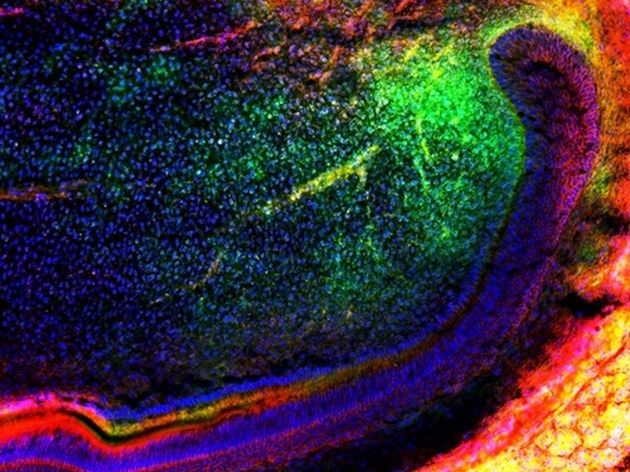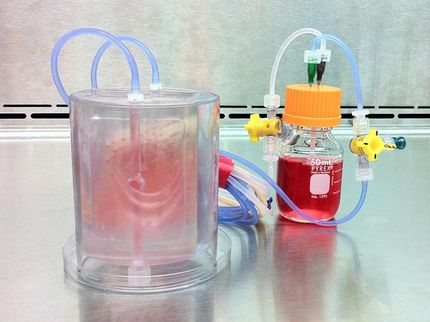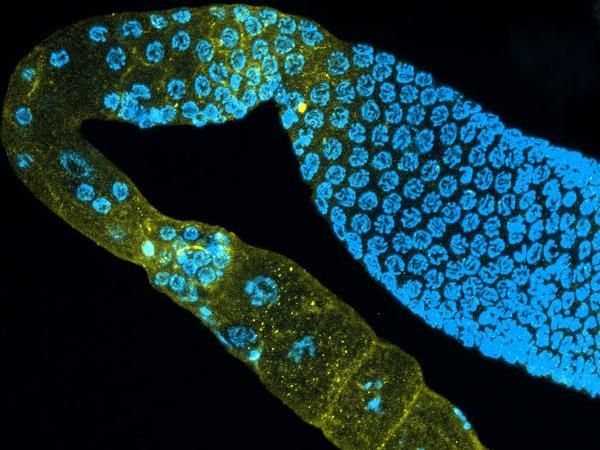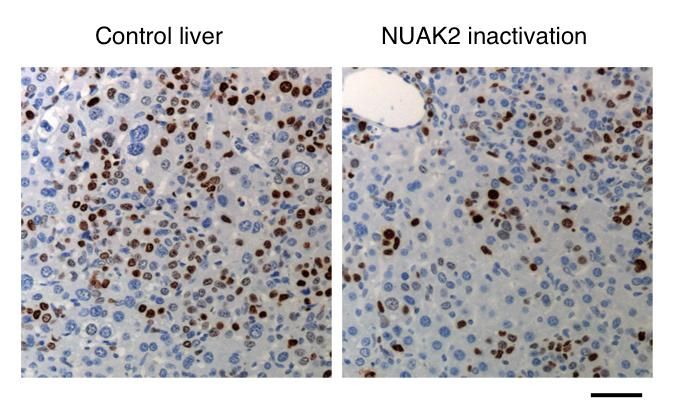A new method of tooth repair?
Scientists uncover mechanisms that could help future dental treatment
stem cells hold the key for tissue engineering, as they develop into specialised cell types throughout the body including in teeth. An international team of researchers, including scientists from the Biotechnology Center of the TU Dresden (BIOTEC), has found a new mechanism that could offer a potential new solution to tooth repair. They discovered a new population of mesenchymal stromal cells in a continuously growing mouse incisor model. They have shown that these cells contribute to the formation of dentin, the hard tissue that covers the main body of a tooth.

The image shows a group of mesenchymal (green) stem cells migrating in a tooth to further regenerate tissues.
Copyright: Media and Communications/University of Plymouth
Importantly, the work showed that when these stem cells are activated, they send signals back to the mother cells of the tissue to control the number of cells produced, through a molecular gene called Dlk1. This study is the first to show that Dlk1 is vital for this process to work. In the same study, the researchers also demonstrated that Dlk1 can enhance stem cell activation and tissue regeneration in a wound healing model. This mechanism could provide an innovative solution for tooth repair, addressing problems such as tooth decay, crumbling and trauma treatment. Further studies are needed to validate the results for clinical applications to determine the appropriate duration and dose of treatment.
The study was led by Dr Bing Hu of the Peninsula Dental School of the University of Plymouth, UK. Co-authors were research group leader Dr. Denis Corbeil and his colleague Dr. Jana Karbanová from BIOTEC. "The discovery of this new population of stromal cells was very exciting and has enormous potential in regenerative medicine," says Dr. Denis Corbeil.
Original publication
"Transit Amplifying Cells Coordinate Mouse Incisor Mesenchymal Stem Cell Activation"; Walker J.V., H. Zhuang, D. Singer, C. Illsle, W.L. Kok, K.K. Sivaraj, Y. Gao, C. Bolton, Y. Liu, M. Zhao, P.R.C. Grayson, S. Wang, J. Karbanová, T. Lee, S. Ardu, Q. Lai, J. Liu, M. Kassem, S. Chen, K. Yang, Y. Bai, C. Tredwin, A.C. Zambon, D. Corbeil, R. Adams, B M. Abdallah and B. Hu; Nature Communications; 2019
Most read news
Original publication
"Transit Amplifying Cells Coordinate Mouse Incisor Mesenchymal Stem Cell Activation"; Walker J.V., H. Zhuang, D. Singer, C. Illsle, W.L. Kok, K.K. Sivaraj, Y. Gao, C. Bolton, Y. Liu, M. Zhao, P.R.C. Grayson, S. Wang, J. Karbanová, T. Lee, S. Ardu, Q. Lai, J. Liu, M. Kassem, S. Chen, K. Yang, Y. Bai, C. Tredwin, A.C. Zambon, D. Corbeil, R. Adams, B M. Abdallah and B. Hu; Nature Communications; 2019
Organizations
Other news from the department science

Get the life science industry in your inbox
By submitting this form you agree that LUMITOS AG will send you the newsletter(s) selected above by email. Your data will not be passed on to third parties. Your data will be stored and processed in accordance with our data protection regulations. LUMITOS may contact you by email for the purpose of advertising or market and opinion surveys. You can revoke your consent at any time without giving reasons to LUMITOS AG, Ernst-Augustin-Str. 2, 12489 Berlin, Germany or by e-mail at revoke@lumitos.com with effect for the future. In addition, each email contains a link to unsubscribe from the corresponding newsletter.























































